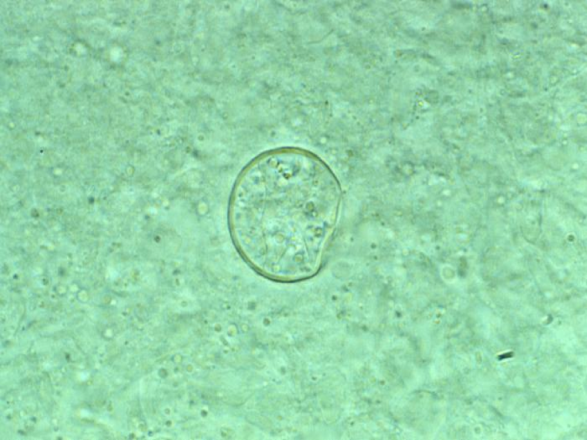70-year-old with chronic productive cough
A 70-year-old woman complains of a chronic productive cough. She has no other significant medical problems and has never smoked.
Her chest x-ray findings show interstitial changes in the right middle lobe and some evidence of bronchiectasis. Tuberculin skin test findings are negative. Bronchoscopy is performed and sputum cultures are obtained.
What will be the most likely finding?
- bronchioalveolar lavage (BAL) positive for Mycobacterium avium complex (MAC)
- sputum culture positive for Mycobacterium tuberculosis
- transbronchial biopsy sample consistent with adenocarcinoma
- transbronchial biopsy sample consistent with carcinoid tumor
- bronchioalveolar lavage (BAL) Gomori methenamine silver staining positive for Pneumocystis jiroveci
The correct answer is:
bronchioalveolar lavage (BAL) positive for Mycobacterium avium complex (MAC)
This is one of the common patterns of pulmonary disease associated with MAC, also called Lady Windermere syndrome. The patients involved are usually middle-aged to elderly woman with no significant smoking history and no underlying illness (no previous pulmonary disease) who present with a chronic cough.
The cough is usually productive and occasionally hemoptysis is seen. Chest imaging shows interstitial and bronchiectatic changes in the lingula or right middle lobe. A positive diagnosis for MAC is made with 2 positive sputum cultures or a positive BAL specimen.
Isolation of MAC frequently represents colonization, however, selected patients with clinical, radiographic, and microbiologic criteria for the diagnosis of nontuberous mycobacterial (NTM) infection warrant treatment. NTM presents in two variants: 1) fibrocavitary disease, with cavities, fibrosis, and pleural involvement over contiguous areas, and 2) nodular bronchiectatic disease. For patients with fibrocavitary disease, treatment with a macrolide and rifamycin are preferred at the time of diagnosis, as this variant rapidly progresses to destructive disease. In the case of nodular bronchiectatic disease, as with the patient in this scenario, the decision of whether to treat or observe depends upon clinical severity.
References:
Kasperbauer S, Daley CL. “Treatment of mycobacterium avium complex lung infection in adults.” UpToDate (Accessed April 17, 2018)
Thomson RM. Changing epidemiology of pulmonary nontuberculous mycobacteria infections. Emerg Infect Dis. 2010;16:1576-1583.
Winthrop KL, McNelley E, Kendall B, et al. Pulmonary nontuberculous mycobacterial disease prevalence and clinical features: an emerging public health disease*. Am J Respir Crit Care Med*. 2010;182:977-982.
This question appears in Med-Challenger Family Nurse Practitioner Exam Review with CME




.png)
